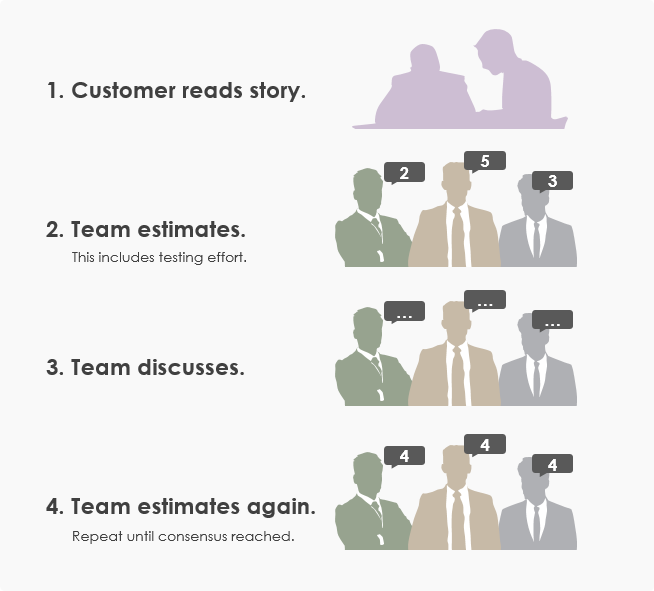Poker Planning Approach
- Estimation Techniques Tutorial
This is why this agile planning practice could be sometimes names differently: scrum poker, agile poker, etc. This article presents a list of free and open source planning poker tools and plugins that are also directly available as online tools. Agile Estimation using Planning Poker.Visit agiledigest.com/agile-digest-tutorial/agile-estimation/ for details on Agile Estimation for user storyVisit htt. Poker planning is an estimation technique for agile teams that is used for calculating how much team resources should be allocated to complete a particular task from a product backlog. In planning poker every team member provides their own assessment of the task, and after a short discussion the team finds a consensus on the magnitude of the task. Planning Poker Estimation Planning Poker is a consensus-based technique for estimating, mostly used to estimate effort or relative size of user stories in Scrum. Planning Poker combines three estimation techniques − Wideband Delphi Technique, Analogous Estimation, and Estimation using WBS.
- Estimation Techniques Resources
- Selected Reading
Planning Poker Estimation

Planning Poker is a consensus-based technique for estimating, mostly used to estimate effort or relative size of user stories in Scrum.
Planning Poker combines three estimation techniques − Wideband Delphi Technique, Analogous Estimation, and Estimation using WBS.

Planning Poker was first defined and named by James Grenning in 2002 and later popularized by Mike Cohn in his book 'Agile Estimating and Planning”, whose company trade marked the term.
Planning Poker Estimation Technique
In Planning Poker Estimation Technique, estimates for the user stories are derived by playing planning poker. The entire Scrum team is involved and it results in quick but reliable estimates.
Planning Poker is played with a deck of cards. As Fibonacci sequence is used, the cards have numbers - 1, 2, 3, 5, 8, 13, 21, 34, etc. These numbers represent the “Story Points”. Each estimator has a deck of cards. The numbers on the cards should be large enough to be visible to all the team members, when one of the team members holds up a card.
One of the team members is selected as the Moderator. The moderator reads the description of the user story for which estimation is being made. If the estimators have any questions, product owner answers them.
Each estimator privately selects a card representing his or her estimate. Cards are not shown until all the estimators have made a selection. At that time, all cards are simultaneously turned over and held up so that all team members can see each estimate.
In the first round, it is very likely that the estimations vary. The high and low estimators explain the reason for their estimates. Care should be taken that all the discussions are meant for understanding only and nothing is to be taken personally. The moderator has to ensure the same.
The team can discuss the story and their estimates for a few more minutes.
The moderator can take notes on the discussion that will be helpful when the specific story is developed. After the discussion, each estimator re-estimates by again selecting a card. Cards are once again kept private until everyone has estimated, at which point they are turned over at the same time.

Repeat the process till the estimates converge to a single estimate that can be used for the story. The number of rounds of estimation may vary from one user story to another.
Benefits of Planning Poker Estimation
Poker Planning Approach Plan


Planning poker combines three methods of estimation −
Expert Opinion − In expert opinion-based estimation approach, an expert is asked how long something will take or how big it will be. The expert provides an estimate relying on his or her experience or intuition or gut feel. Expert Opinion Estimation usually doesn’t take much time and is more accurate compared to some of the analytical methods.
Analogy − Analogy estimation uses comparison of user stories. The user story under estimation is compared with similar user stories implemented earlier, giving accurate results as the estimation is based on proven data.
Poker Planning Approach Examples
Disaggregation − Disaggregation estimation is done by splitting a user story into smaller, easier-to-estimate user stories. The user stories to be included in a sprint are normally in the range of two to five days to develop. Hence, the user stories that possibly take longer duration need to be split into smaller use-Cases. This approach also ensures that there would be many stories that are comparable.